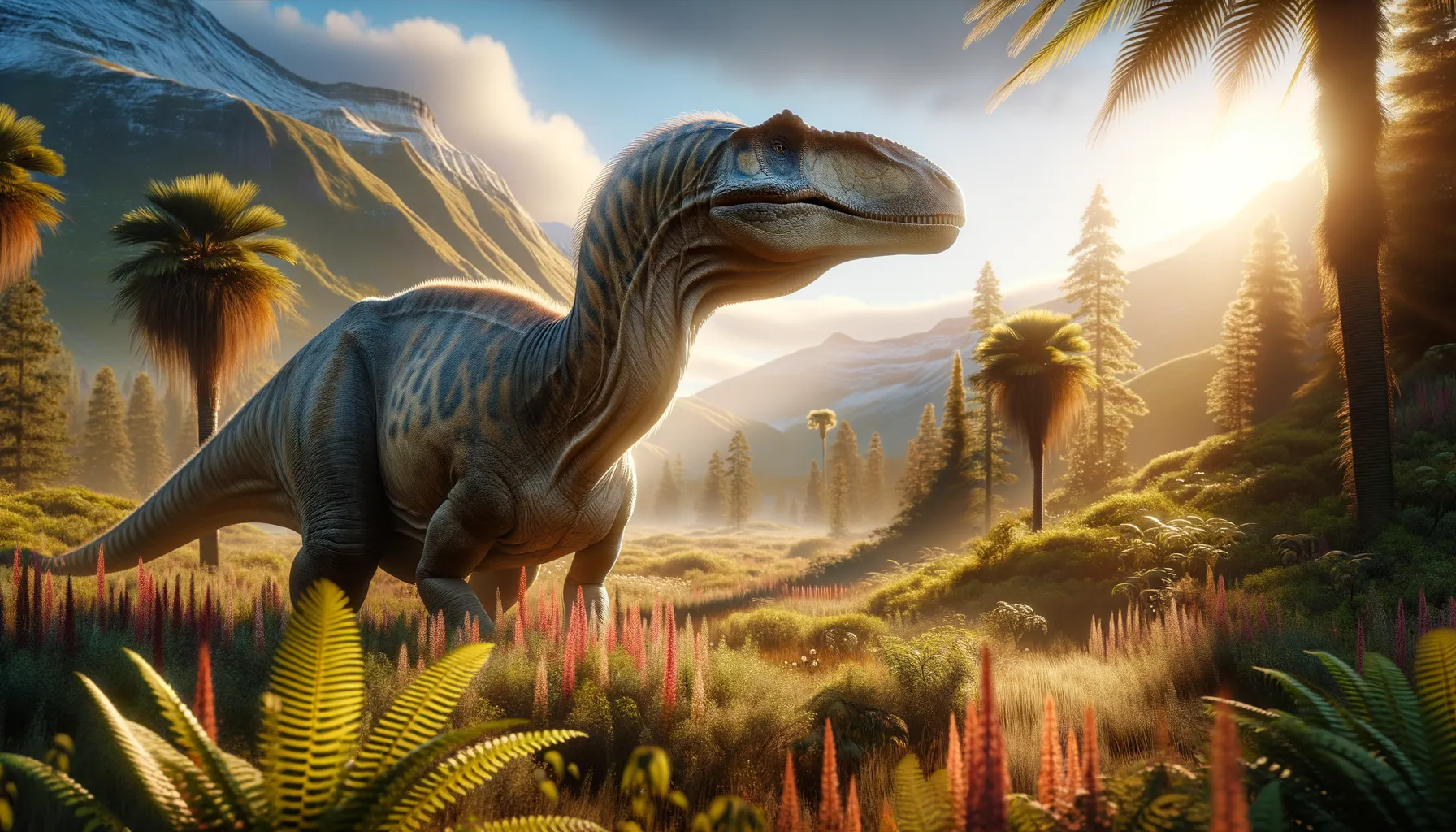
Cheneosaurus
Grazing the ancient plains with grace.
Period
Cretaceous
Length
Roughly 8 to 10 meters long.
Height
About 2 to 3 meters at the hip.
Weight
Approximately 2,000 to 3,000 kg.
Cheneosaurus, known from limited fossil evidence, was a herbivorous dinosaur that roamed North America during the late Cretaceous period. It is believed to be part of the hadrosaurid family, popularly known as duck-billed dinosaurs. This group was distinguished by their flat, broad snouts and were likely well-adapted to grazing on a variety of vegetation. Like many hadrosaurs, it probably traveled in herds for protection and social interaction.
Diet
Cheneosaurus was herbivorous, feeding primarily on leaves, twigs, and other vegetation available in its environment. Its dental structure suggests it was well-equipped to grind plant materials efficiently, making it an effective browser.
Hunting
As a plant-eater, it did not hunt other animals. Instead, it likely spent much of its time foraging for food, using its keen sense of smell to locate nutritious plants. Herd behavior might have also helped in locating food sources quickly.
Environmental challenges
Cheneosaurus faced numerous environmental challenges, including changes in vegetation due to climate shifts. Natural predators posed constant threats, requiring vigilance and group cohesion for protection. Additionally, fluctuating water sources could have impacted their grazing patterns, necessitating migrations to more stable environments.
Speed
Moderate, suitable for short bursts.
Lifespan
Estimated to be around 20 to 30 years.
First discovery
Discovered in North America in the early 20th century.
Fun Facts
- Cheneosaurus was a duck-billed dinosaur that belonged to the hadrosaur family.
- It lived during the Late Cretaceous period, around 75 million years ago.
- Fossils of Cheneosaurus have been primarily found in Alberta, Canada.
- The name Cheneosaurus means 'goose lizard,' referring to its duck-bill shaped snout.
- Unlike some of its relatives, Cheneosaurus did not have a crest on its head.
- Cheneosaurus likely lived in herds and fed on plants, using its specialized teeth to grind tough vegetation.
- It could walk on two legs or all fours, allowing it to adapt to different types of movement.
Growth and Development
The growth rate of Cheneosaurus was likely influenced by environmental factors and availability of food. Juveniles would have experienced rapid growth to reach adult size, increasing their chances of survival. Parental care might have been limited, with young learning survival skills through observation and practice within herds.
Habitat
Cheneosaurus inhabited floodplains, forests, and wetlands, which provided ample food and water resources. These environments supported a rich diversity of plant life crucial for their sustenance. Seasonal changes in their habitat likely influenced migratory patterns and social structure.
Interaction with other species
Cheneosaurus lived alongside various dinosaur species, including predators like tyrannosaurids. Herd behavior provided safety in numbers, reducing predation risks. Symbiotic relationships might have existed with smaller species that benefited from their grazing patterns.
Natural lifespan
Cheneosaurus likely lived up to 20-30 years in the wild.
Reproduction
Cheneosaurus reproduced by laying eggs, similar to other dinosaurs. Nesting sites were likely selected for safety and proximity to food sources. Hatchlings were small and vulnerable, initially depending on nests for protection from predators.
Social behaviour
Cheneosaurus likely exhibited strong social behaviors, moving in herds for mutual protection and social interaction. Herd mobility allowed them to find resources and evade predators. Communication within the group might have involved vocalizations or visual signals.
Fossil locations
Fossils of Cheneosaurus have been primarily found in Canada, indicating their presence in northern North America during the late Cretaceous. These discoveries help piece together their ecological role and biological characteristics at that time.
